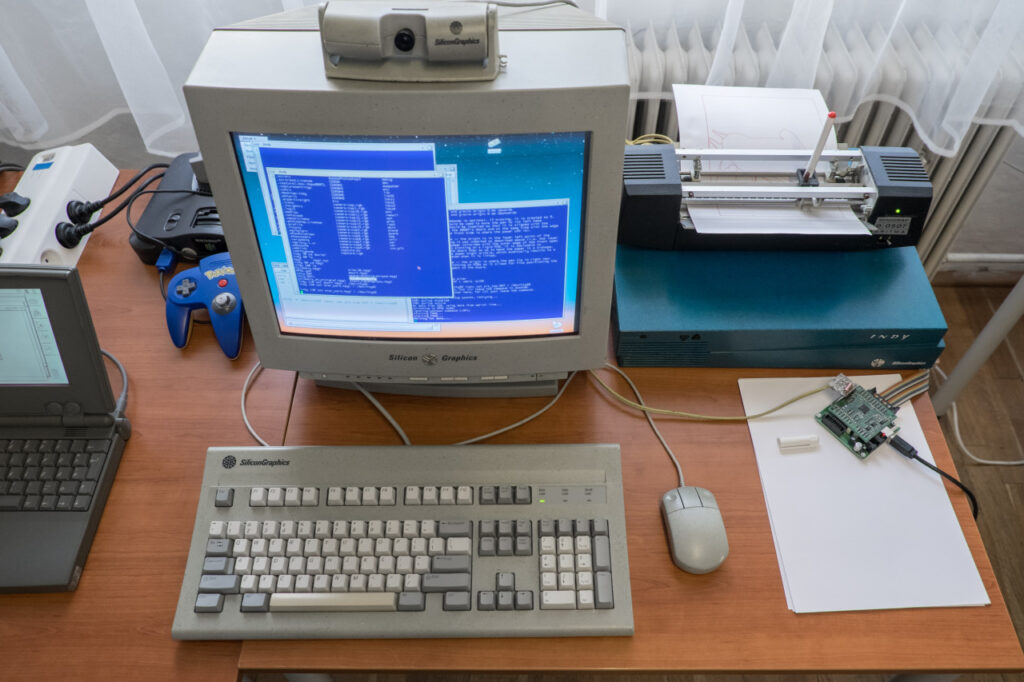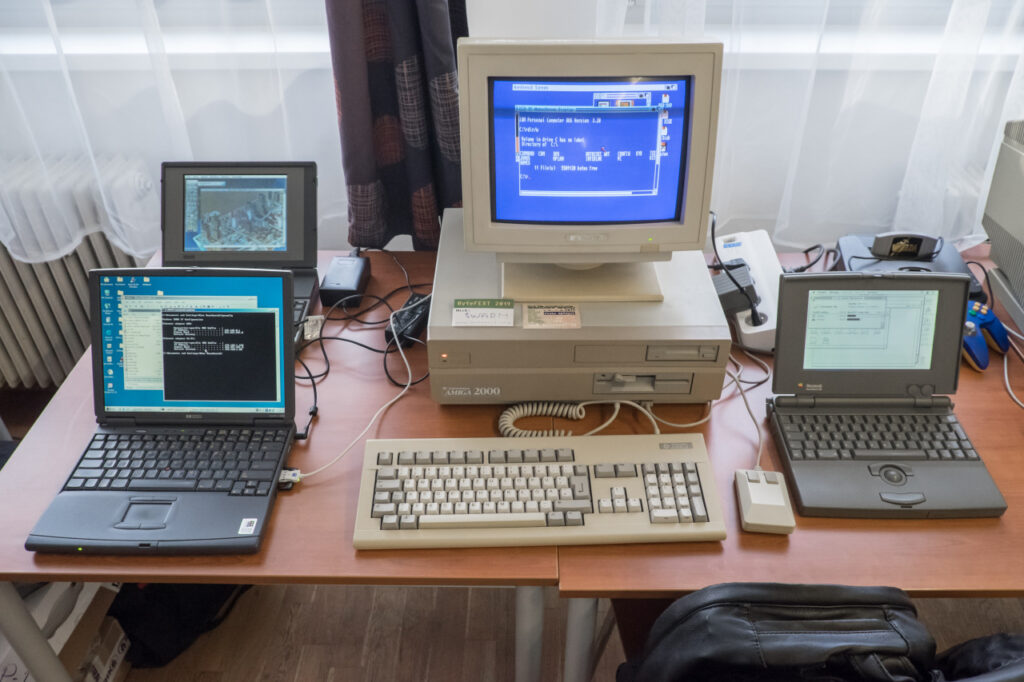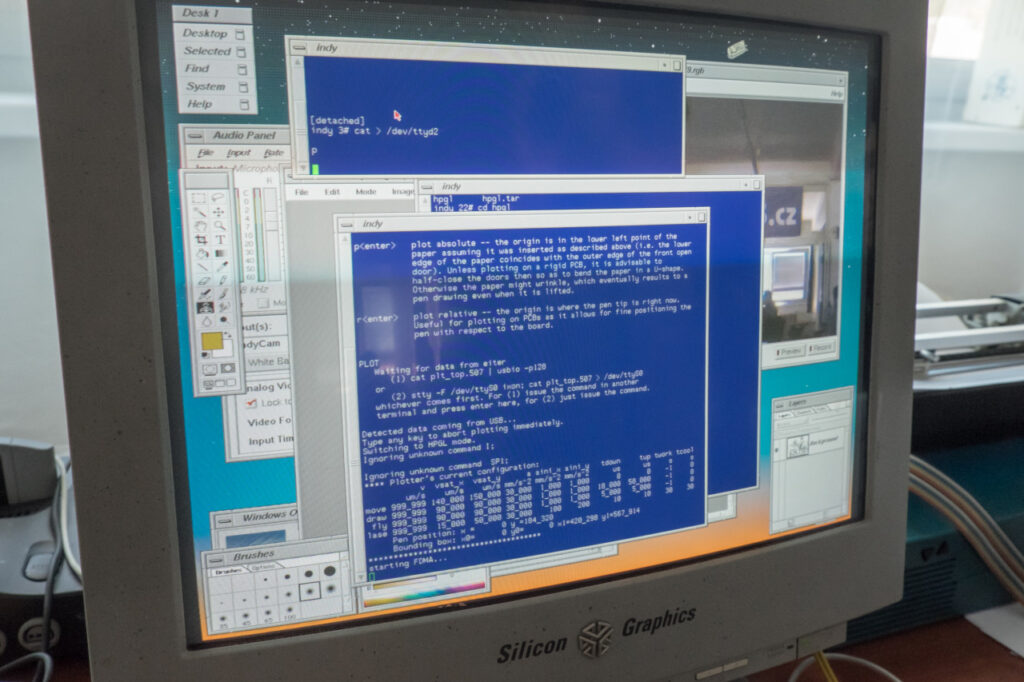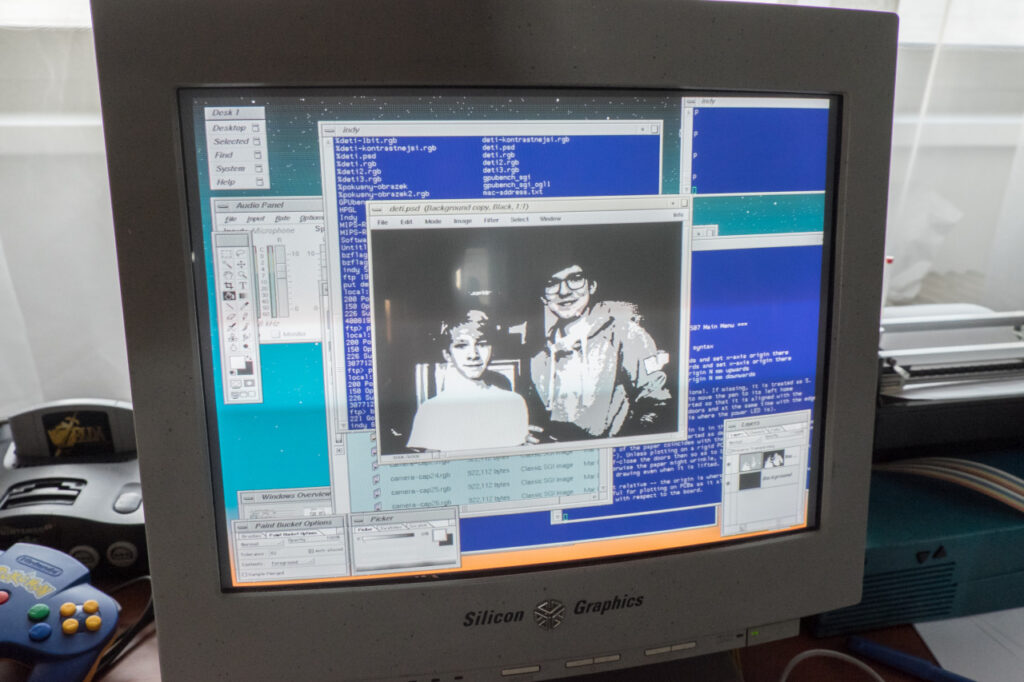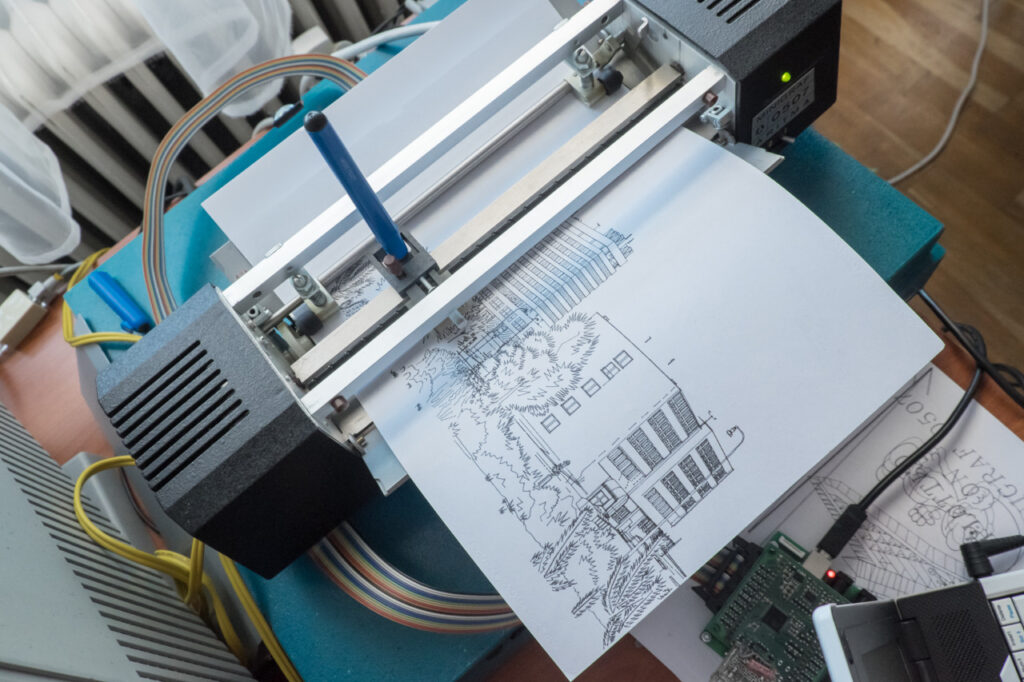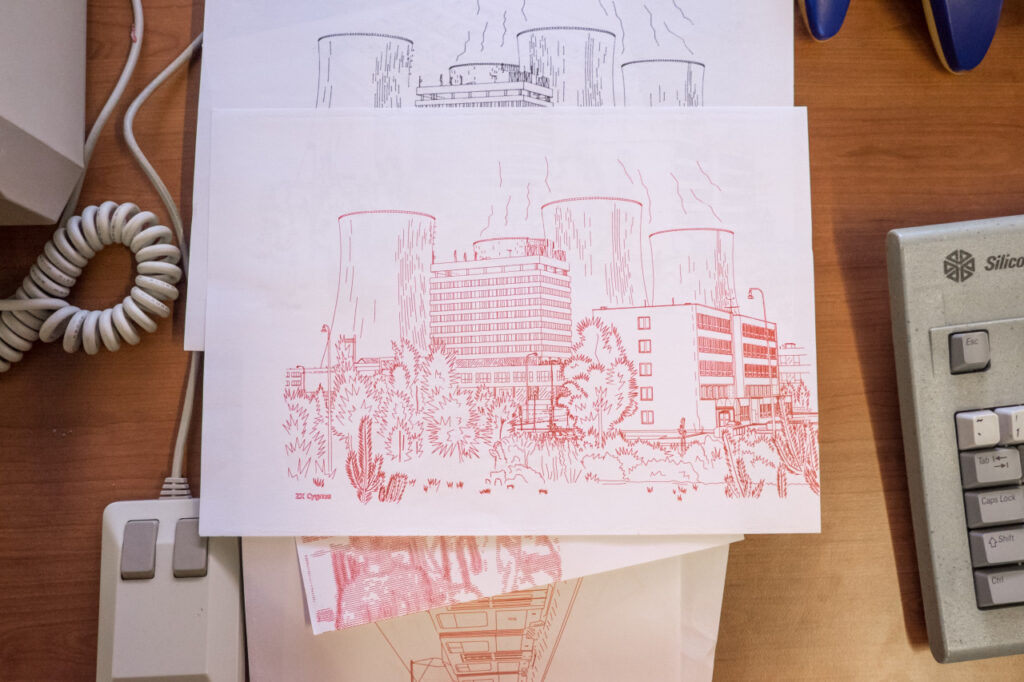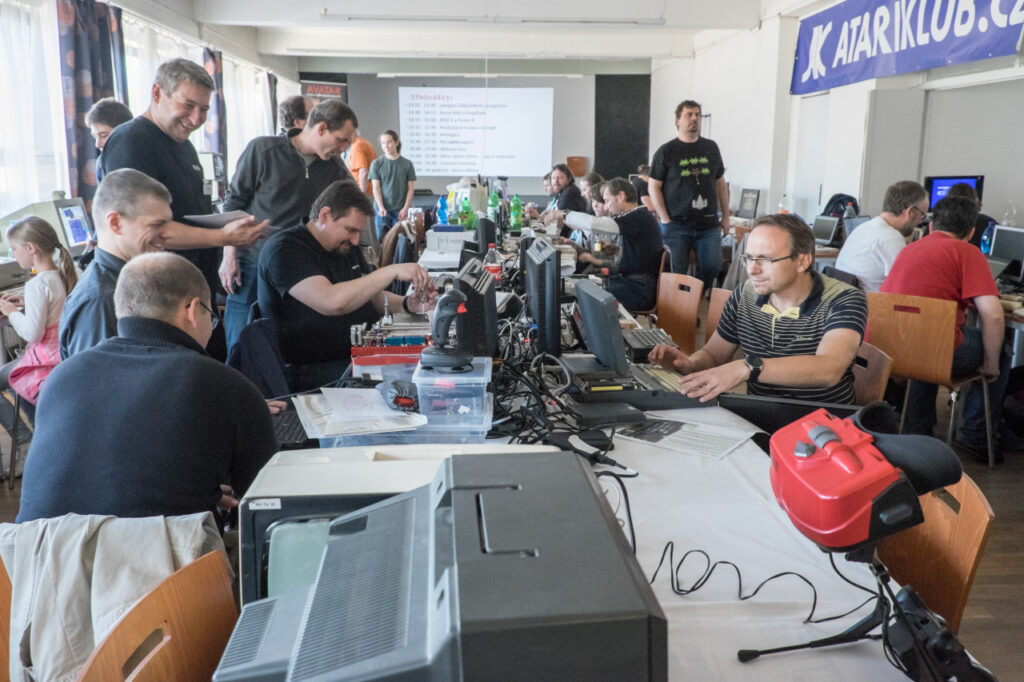Bytefest 2019
These were the computers we brought to Bytefest – a Czech vintage computer show. David and I decided not to bring more than two desktop systems. Amiga 2000 was an obvious choice – we fixed it not a long time ago and I played a lot with it recently. The other computer was SGI Indy with the original set of peripherals including the Indycam camera. There are not many vintage UNIX computers to see on vintage computer shows in this country. Thus, it is my duty to bring at least one every year.
The Aritma Minigraf plotter sitting on top of the Indy was connected using one of the Indy’s serial ports though a special ARM-based module that David built. The module contained the control software that allowed it to draw faster and with better precision than the plotter was originally designed for. From time to time, there were couple of people standing in front of the plotter, being hypnotized by the smooth movement of the pen. The Indy itself was communicating with the module as a serial terminal with the ability to send HPGL files that needed to be drawn.
I’d never played that much with Indy before (aside creating the OpenGL 1.0 version of our 3D graphics benchmark) and this was a nice experience. The graphics card in our Indy is able to display no more than 256 colors (or 16 colors for double-buffered 3D), but it’s pretty fast and allows you to have a different 256-color palette for an active window and the rest of the system. Therefore, the color flickering effects are minimized in comparison with PCs set to 256-color modes. I was surprised by the visual quality of the composite input from Nintendo 64 in 256 colors.
Commodore Amiga 2000 was configured to show the capability of this platform during the late 80s (thus, Workbench 1.3 and Kickstart 1.3 only). It didn’t have any accelerator board and the only expansions were a simple hard disk controller, 2-MB fast RAM card and A2088XT PC emulator (with an 8088 and 512kB of RAM). During the show, I also added an ISA card with a serial port (for Microsoft InterLink purposes) and a VGA adapter.
The other devices that we showed were: Apple PowerBook 100 (this year with a working hard drive and full of software), Digital DECpc 325SLC (because a 386 with color LCD is cool) and HP OmniBook 900 (just a service laptop to convert the Wi-Fi Internet into a cable form for the Indy).
